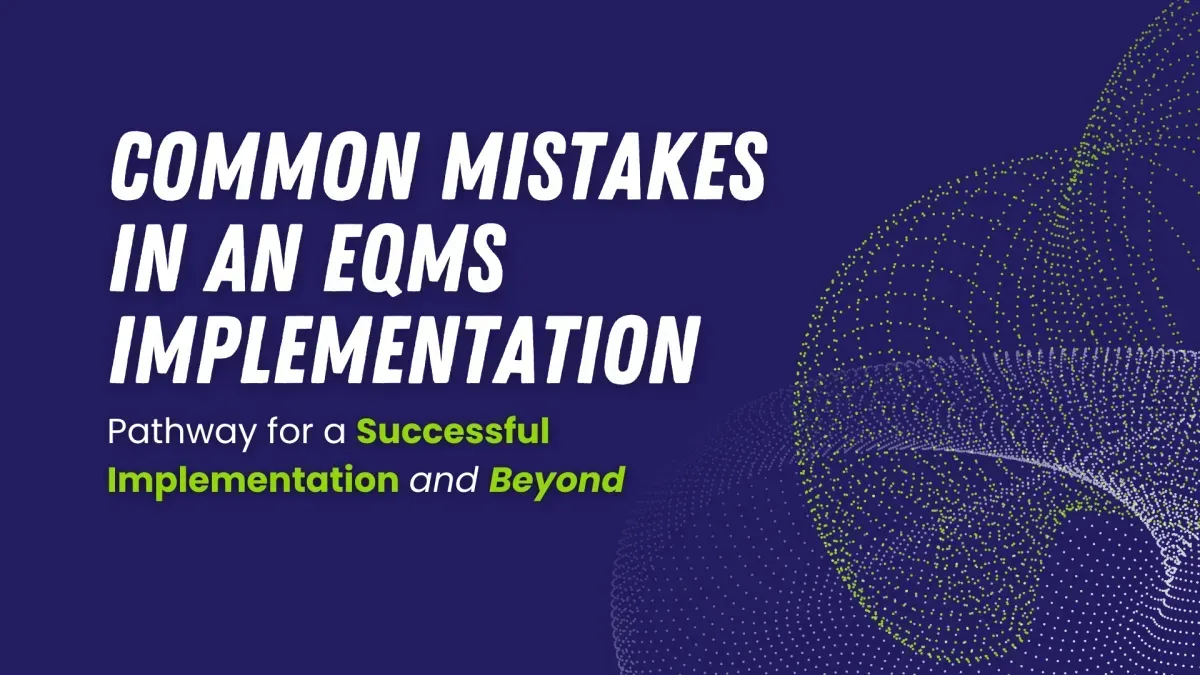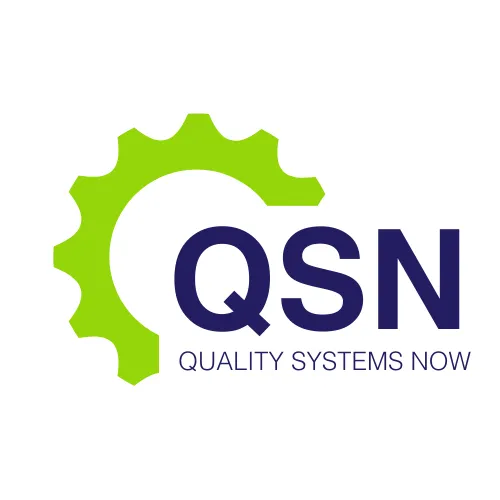LATEST NEWS

Common Mistakes in eQMS Implementation and How to Avoid Them
One of the most effective tools to streamline compliance and ensure operational efficiency is an electronic Quality Management System (eQMS). While implementing an eQMS offers numerous advantages, the process is not without challenges. Missteps during implementation can lead to operational inefficiencies, regulatory non-compliance, and costly delays. This article explores common mistakes in eQMS implementation and provides strategies to avoid these pitfalls to achieve a successful and compliant system.
For our comprehensive Free eBook Click Here
1. Underestimating the Scope of eQMS Implementation
One of the most frequent mistakes during eQMS implementation is underestimating the scope and complexity of the project. Many organizations approach the process with a mindset that the transition from a paper-based to an electronic system will be quick and easy. However, eQMS implementation is a multifaceted endeavor that affects various departments, workflows, and procedures.
Solution: Comprehensive Planning Effective planning is essential to avoid underestimating the scope. Start by conducting a thorough needs assessment across departments to understand current workflows, identify pain points, and define the specific requirements the eQMS must address. Develop a phased implementation plan that allows for gradual system roll-out, ensuring that all teams have adequate time for adjustment and training.
2. Lack of Top Management Commitment
Successful eQMS implementation requires a firm commitment from top management. Without adequate support, the implementation can face budget constraints, resource shortages, and insufficient attention, leading to delays and inefficiencies. Moreover, if leadership does not fully understand the importance of the system, teams may resist adoption, viewing it as an unnecessary burden.
Solution: Engage Leadership Early Engage top management early in the process by highlighting the long-term benefits of an eQMS, including improved compliance, reduced risk, and operational efficiencies. Encourage executives to champion the project and ensure adequate allocation of resources. Regularly communicate progress, and emphasize how the eQMS aligns with organizational goals for compliance and quality.
3. Failure to Customize the System to Fit Organizational Needs
Off-the-shelf eQMS solutions often come with generic functionalities that may not align with the specific requirements of a pharmaceutical, biotech, or medical device company. Implementing a system without customization can lead to inefficiencies, as workflows may need to be altered to fit the system, rather than the system adapting to fit existing workflows.
Solution: Tailor the eQMS to Your Operations It is crucial to select an eQMS that is flexible and customizable. Collaborate with the software vendor to modify workflows, processes, and reporting tools to fit the unique needs of your organization. Customization ensures that the eQMS will enhance, rather than hinder, your quality processes, making it easier to maintain compliance and meet industry standards.
4. Insufficient Training for End Users
An eQMS can only be effective if employees understand how to use it. One of the most common mistakes is underestimating the amount of training required for users. Skipping or minimizing training can lead to mismanagement of the system, non-compliance, and a failure to achieve the expected return on investment.
Solution: Invest in Comprehensive Training Programs Allocate sufficient time and resources to provide comprehensive training programs for all end users. Training should be tailored to the needs of different teams, such as quality assurance, regulatory affairs, and production. Consider offering ongoing training and refresher courses to ensure continuous competency, especially as the system evolves and new functionalities are introduced.
5. Overlooking Data Migration Challenges
Data migration is one of the most critical aspects of eQMS implementation. Transferring historical data from legacy systems or paper-based records to the new electronic system can be complex and prone to errors. Poorly managed data migration can result in data loss, inaccuracies, and delays in system go-live.
Solution: Plan for Careful Data Migration Create a detailed data migration plan that includes data validation, cleansing, and testing. Collaborate with both IT and quality teams to ensure that critical data is accurately transferred to the eQMS. It is essential to test the migrated data in the new system before going live to avoid disruptions in operations and ensure data integrity.
6. Neglecting Validation Requirements
In highly regulated industries like pharmaceuticals, medical devices, and biotech, regulatory agencies such as the FDA and EMA require validation of any electronic system used to manage quality. Many organizations overlook this crucial step, leading to regulatory citations or non-compliance.
Solution: Follow a Risk-Based Validation Approach Validation ensures that the eQMS functions as intended and complies with regulatory standards. Implement a risk-based validation approach that focuses on critical quality processes and aligns with regulatory guidelines. Document each step of the validation process, from system testing to final approval, to ensure compliance and facilitate regulatory audits.
7. Ignoring Change Management
Implementing an eQMS is a significant change that impacts daily operations. Resistance to change is a common challenge that can stall implementation efforts. Employees may be hesitant to adopt new workflows or may revert to old habits if they perceive the eQMS as overly complex or unnecessary.
Solution: Implement a Robust Change Management Strategy Develop a change management strategy that includes clear communication, training, and support. Address potential concerns early by explaining how the eQMS will improve workflows and contribute to the organization’s long-term goals. Consider appointing change champions within each department to lead by example and support their peers throughout the transition.
Achieving a Successful eQMS Implementation
A well-implemented eQMS can provide substantial benefits, including enhanced compliance, improved operational efficiency, and reduced risk. Avoiding common pitfalls such as underestimating project scope, failing to customize the system, and neglecting validation requirements is essential for success. With careful planning, strong leadership support, comprehensive training, and a focus on change management, organizations in the pharmaceutical, biotech, and medical device sectors can ensure their eQMS implementation supports their compliance and quality objectives.
For more detailed insights and practical tips on eQMS implementation, download our free ebook on “Common Mistakes in eQMS Implementation” here.
